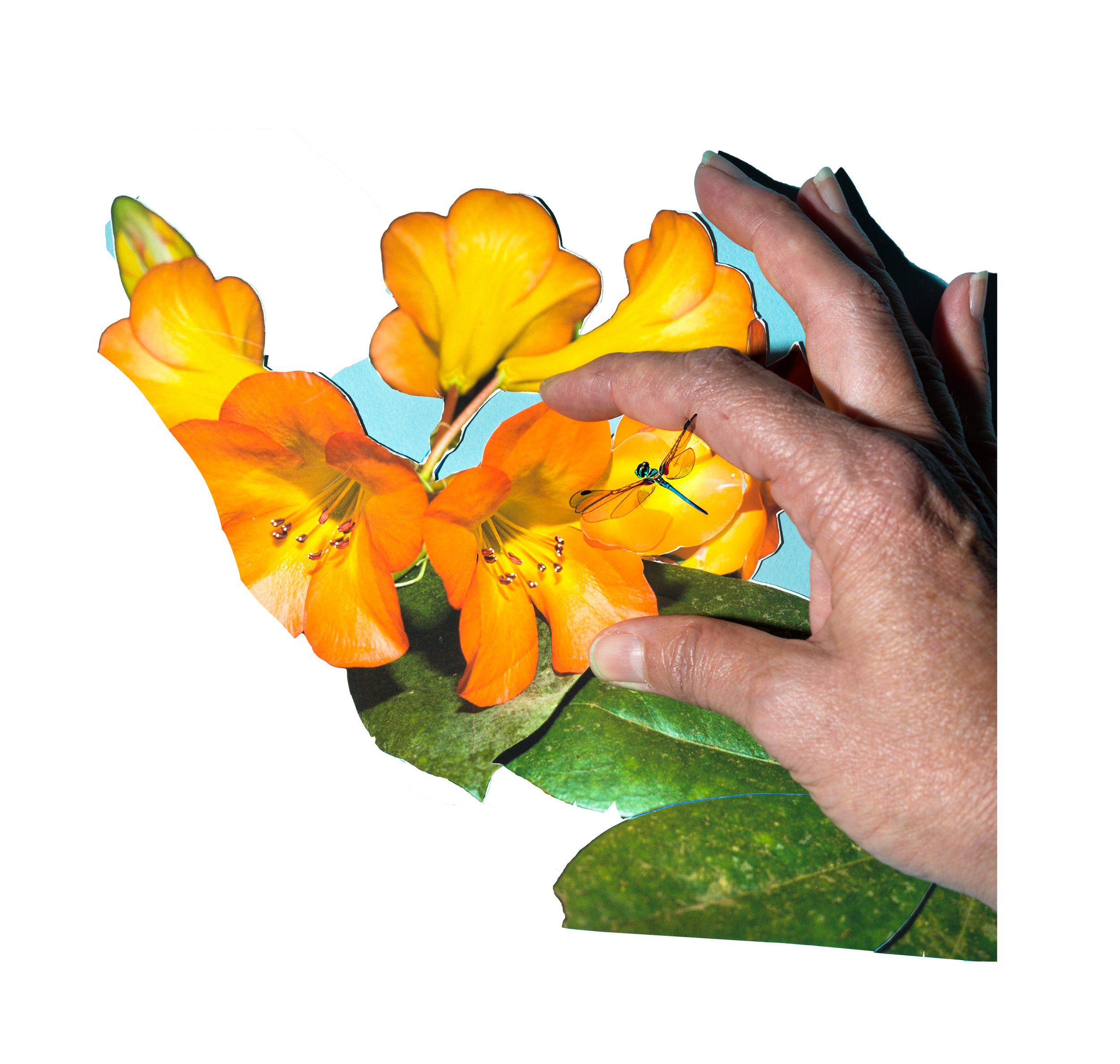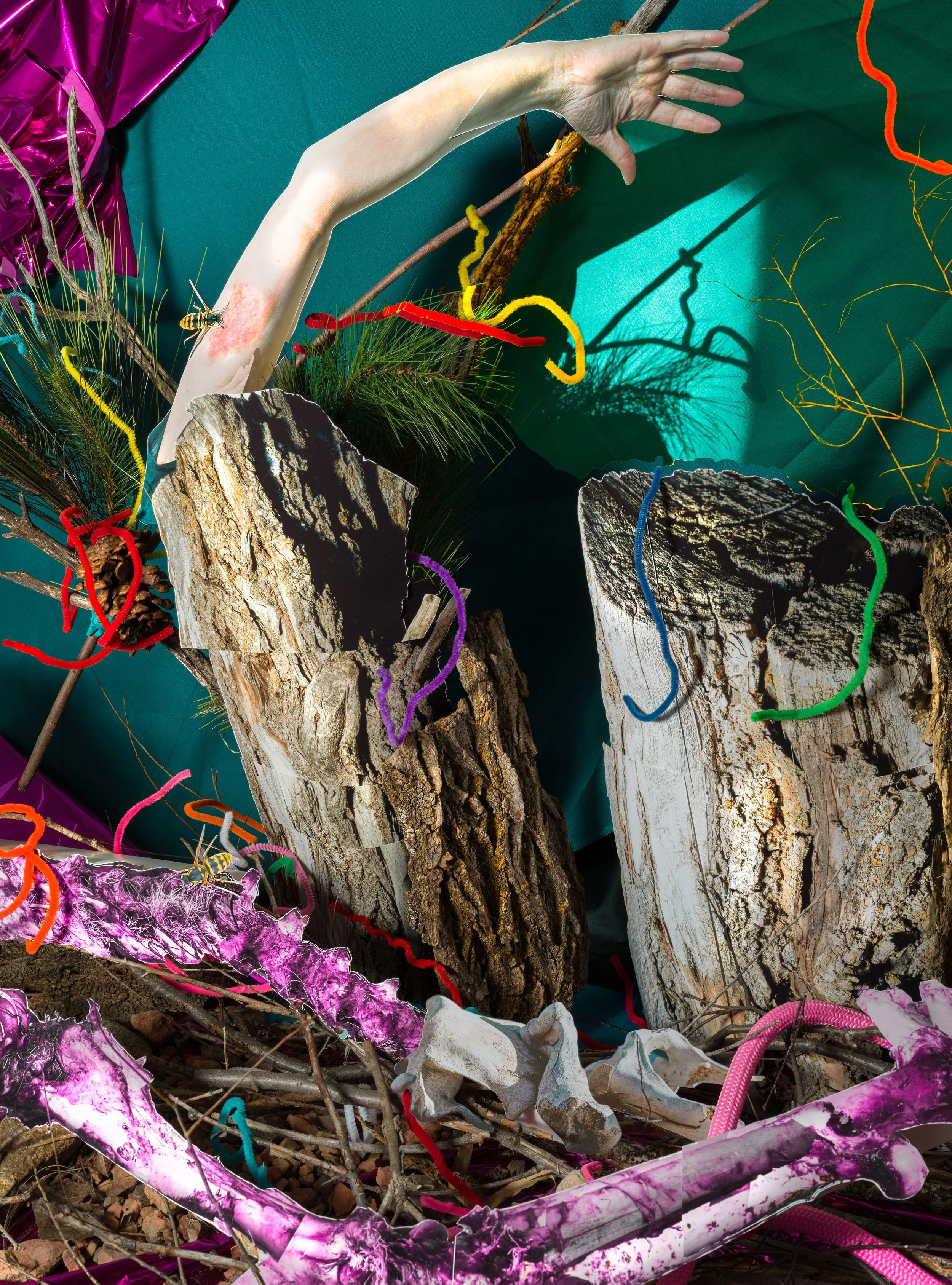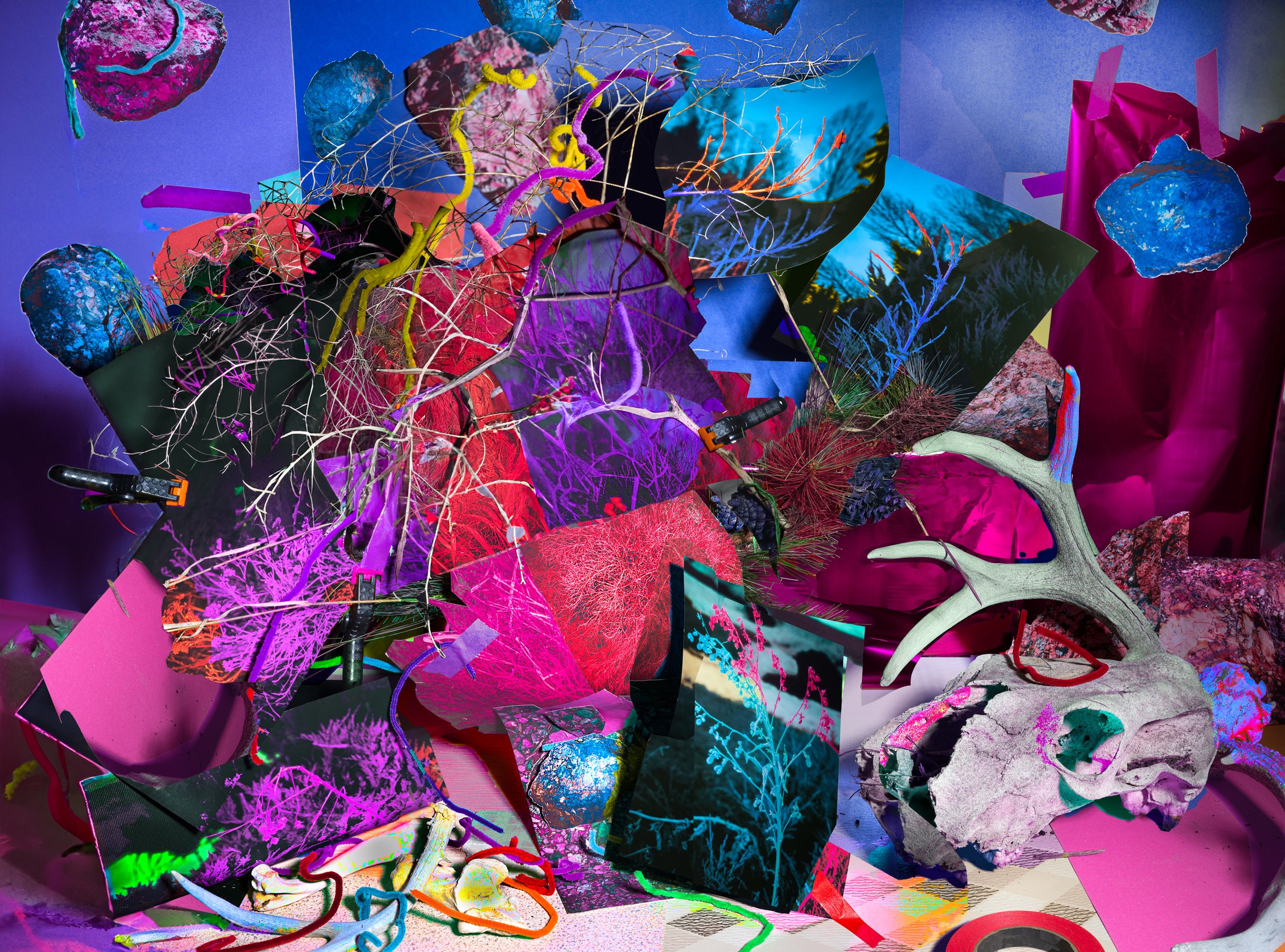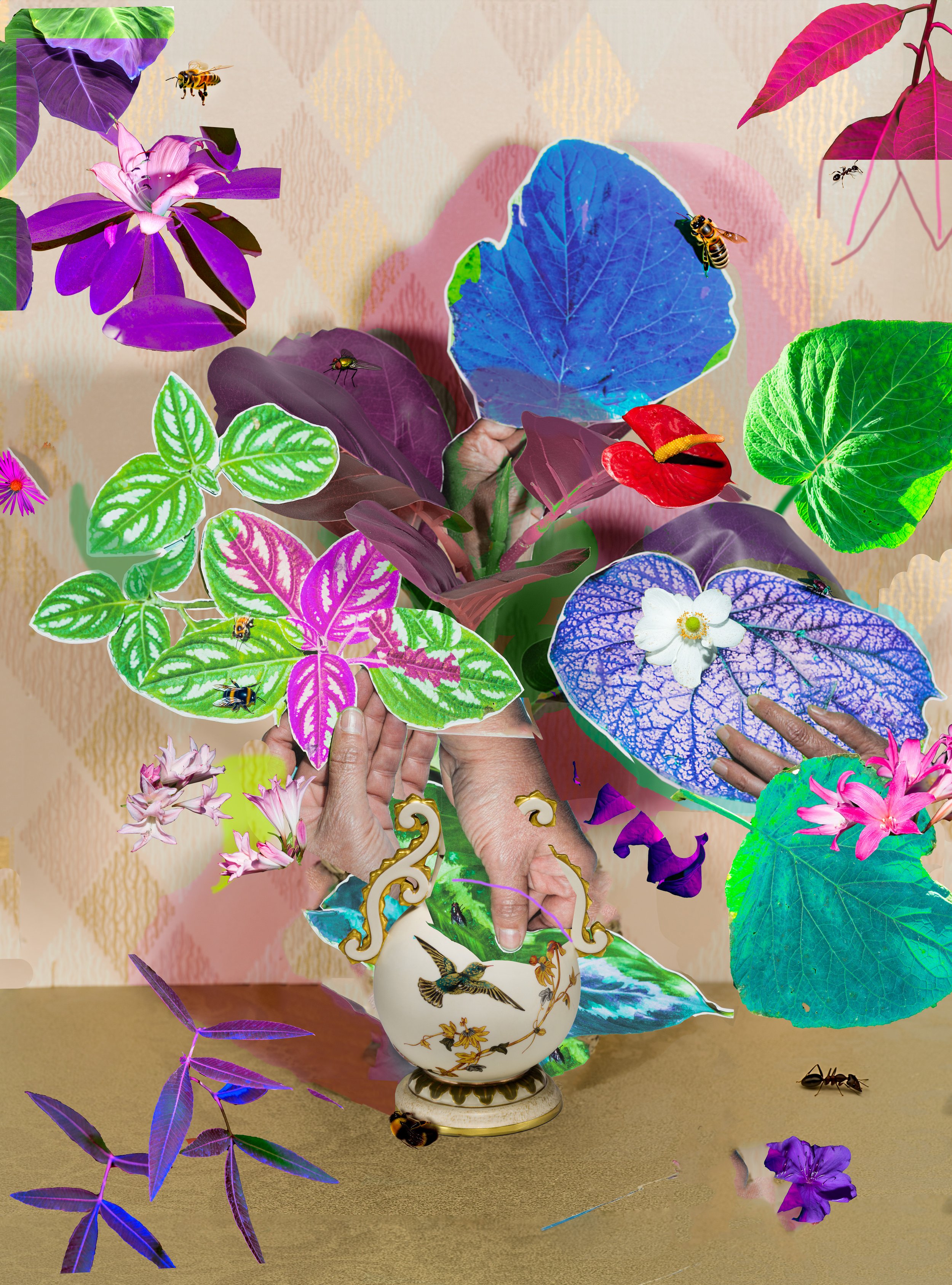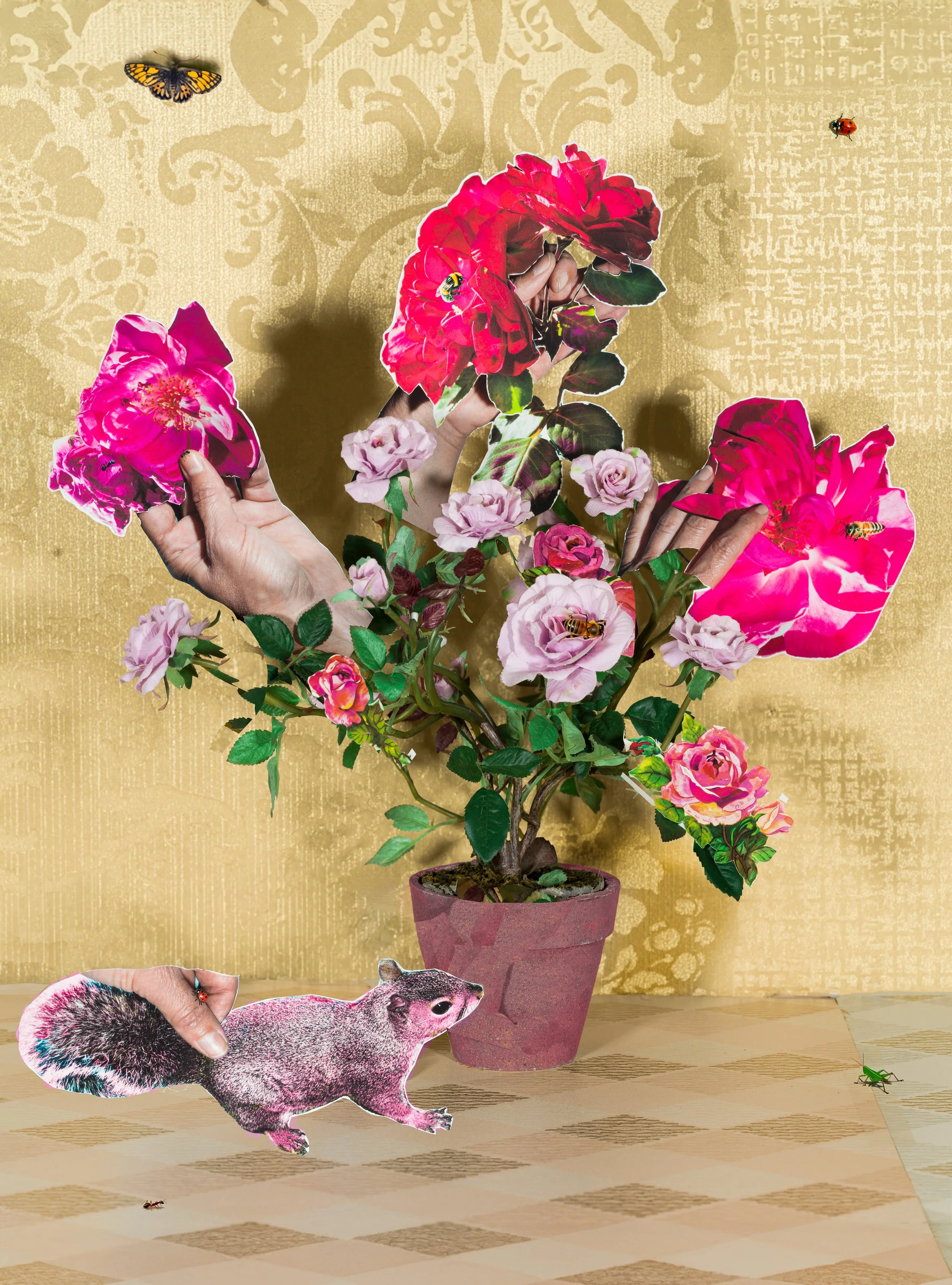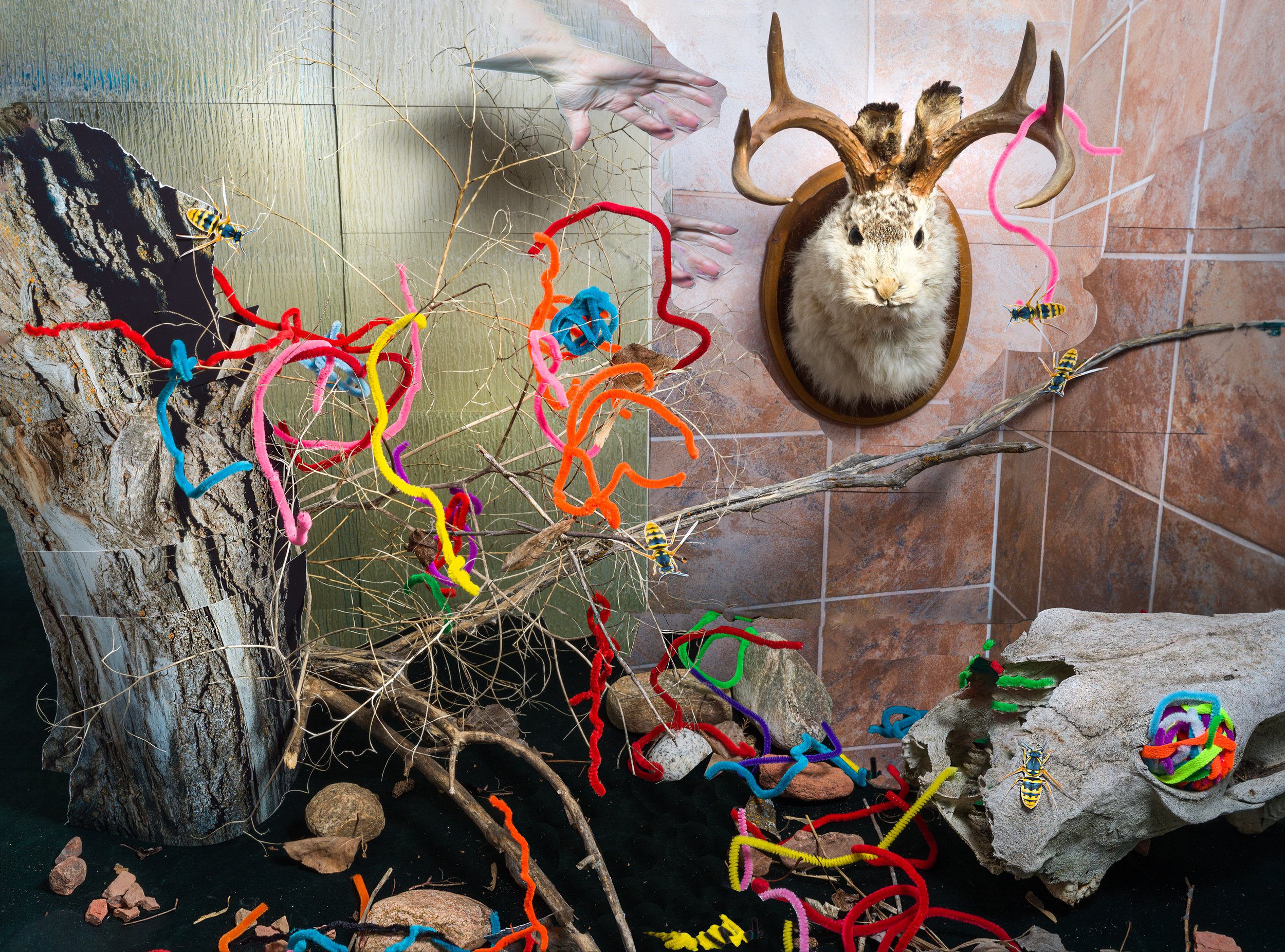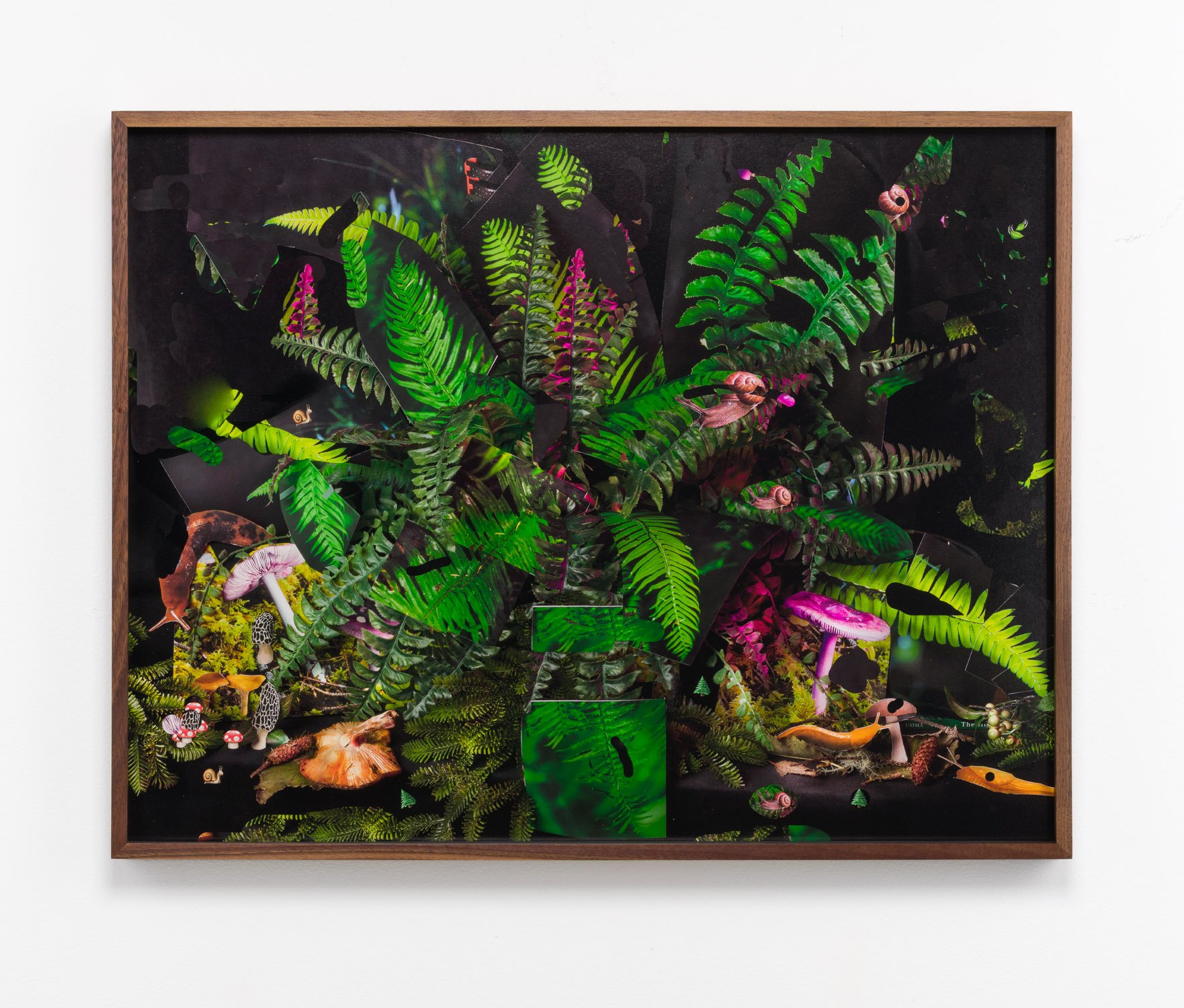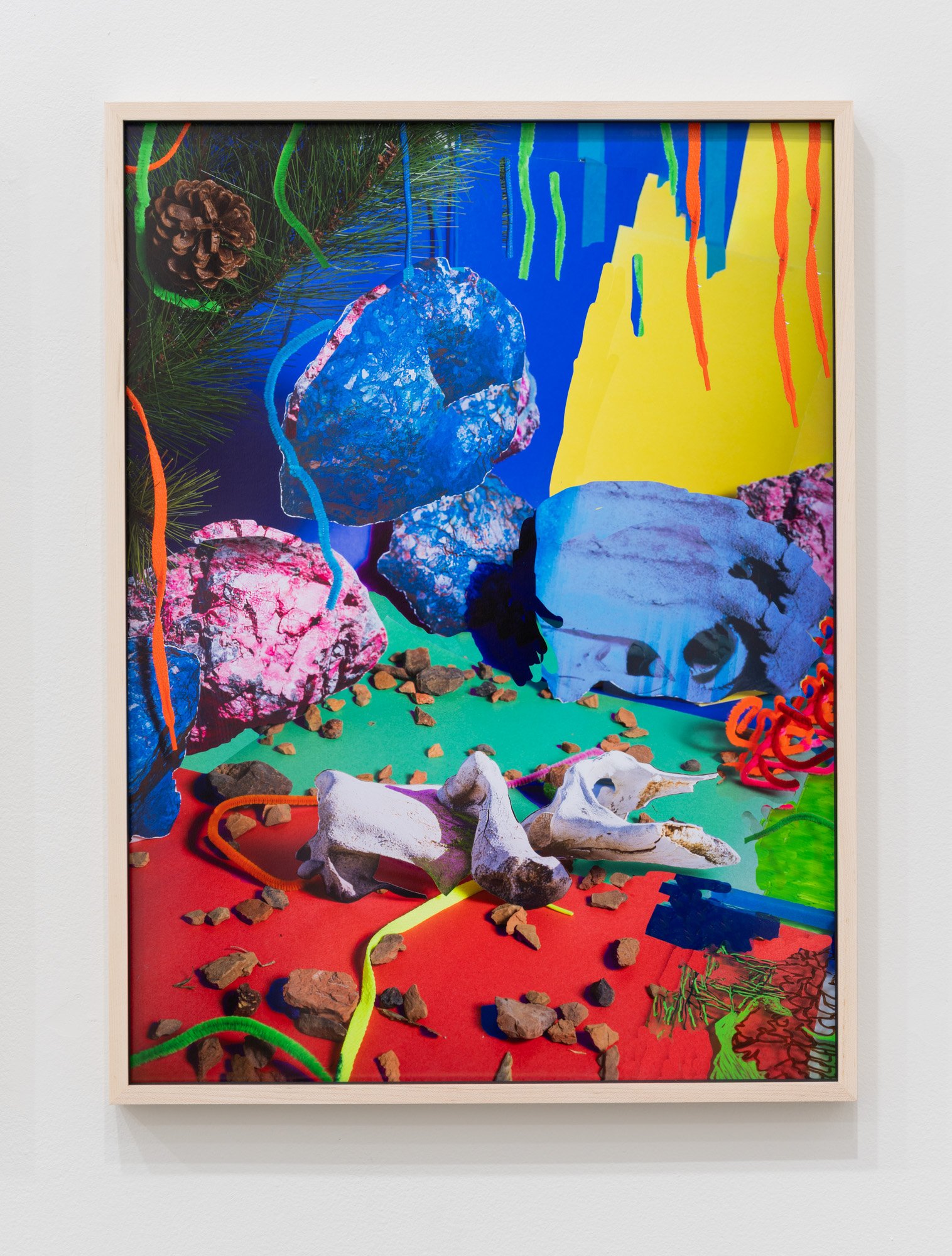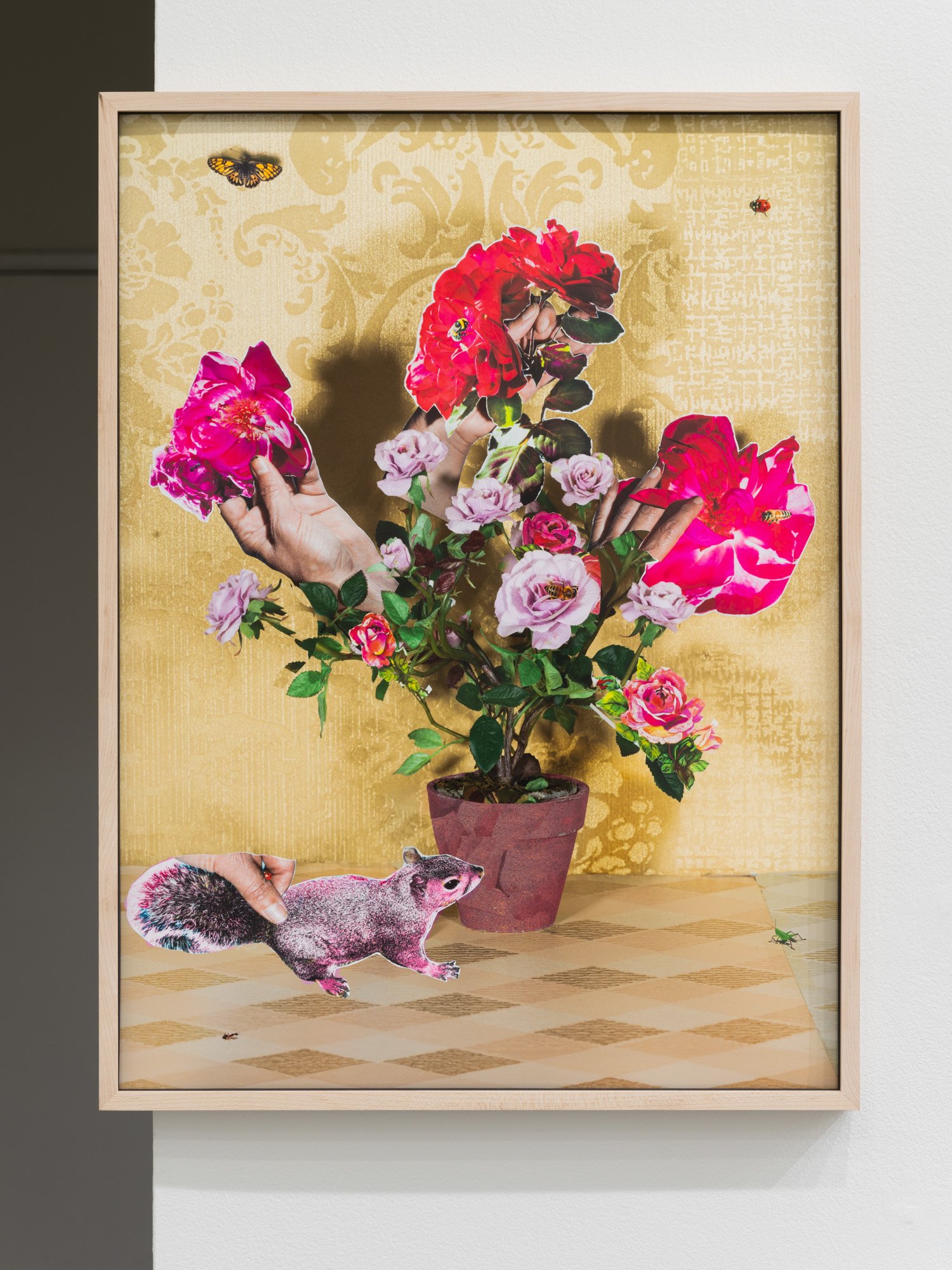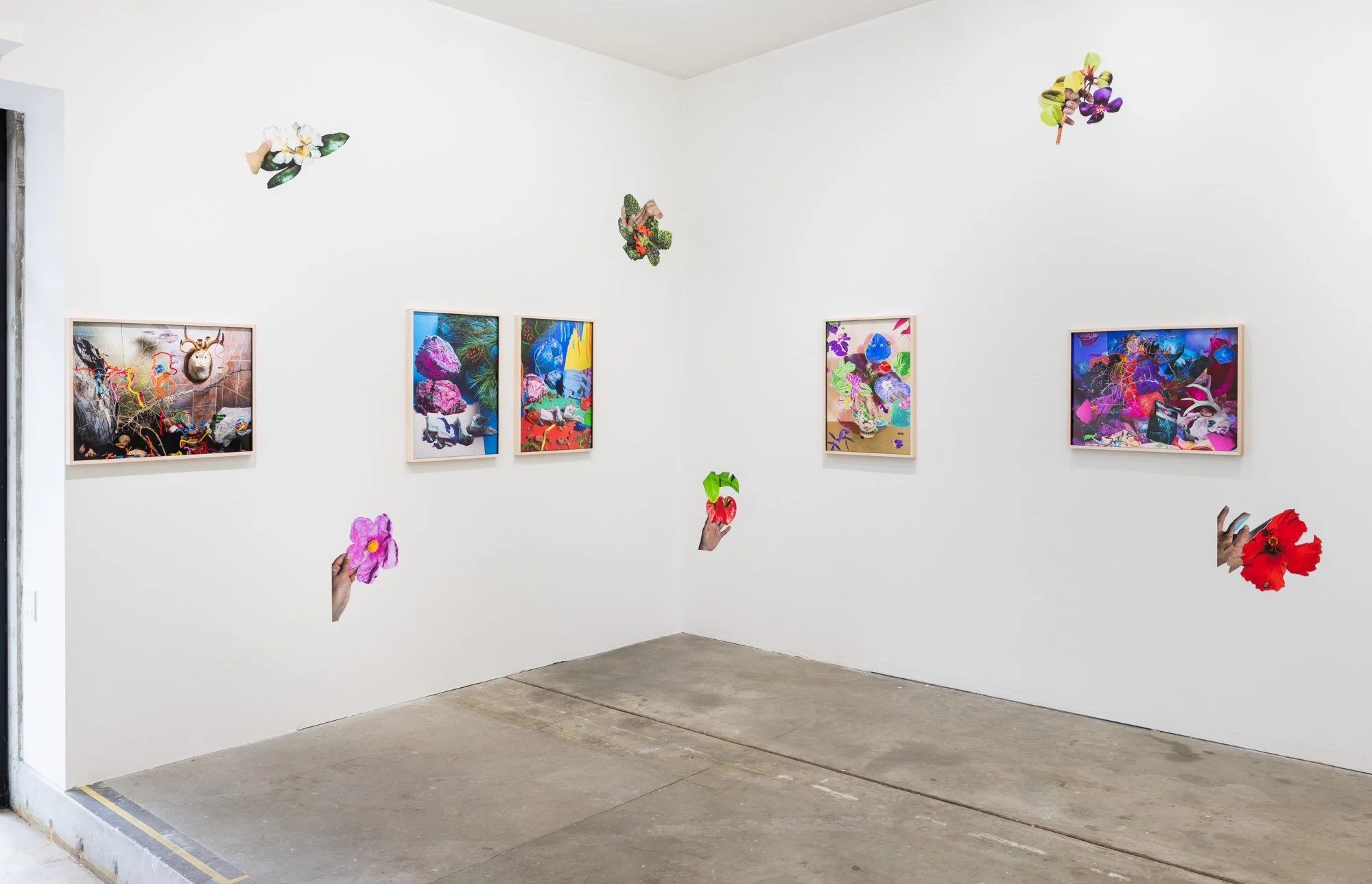Interview with Kelda Van Patten: Constructing Pictorial Spaces with Collage, Re-Photography, and Kitsch
Kelda Van Patten creates disorienting pictorial spaces that utilize still life arrangements, collage, and re-photography to examine the ways in which the artificial world of kitsch stands in for the natural world. Her layered process—combining collage, drawing, and re-photography—shifts perceptions of reality and artifice in playful and unexpected ways. Before digitalization, much of her work is completed in front of a medium-format camera, emphasizing her hands-on approach to image-making.
Van Patten holds a BFA from the San Francisco Art Institute, an MAT from Lewis & Clark College, and an MFA from the Pacific Northwest College of Art. She has exhibited nationally, with recent shows including If I Had a Flower for Every Time I Think of You at Well Well Projects (Portland, OR), Companions at The Vestibule (Seattle, WA), and Fresh at Klompching Gallery (Brooklyn, NY). A member of Well Well Projects, she is the recipient of multiple Regional Arts and Culture Council grants.
Her work has been featured in Fraction Magazine, Bloomberg Businessweek, and Talking Pictures and has been commissioned by Meta Open Arts and licensed by Apple Inc. Select works also reside in the Jordan Schnitzer Family Foundation collection.
We spoke with Van Patten about her artistic journey, the role of kitsch in her work, and how residencies and exhibitions have shaped her creative practice.
Artist Website: keldavanpatten.com
Can you tell us about your journey as an artist and how your background in still life, collage, and re-photography has shaped your creative practice?
Art has been a vital part of my life for as long as I can remember. I have always found joy in drawing, cutting, pasting, and capturing images—essentially, the act of creating. My initial attraction to pursuing a degree in art stemmed from the freedom it provided; I’ve never been one to follow rules, and art felt like a space where I could break them without hesitation—in fact, it was encouraged!
I began my academic studies at California State University, initially exploring a major in child psychology. Throughout this time, I continued taking art classes, but it wasn’t until a drawing instructor encouraged me to apply to art school that I realized I could pursue a career in art. This guidance led me to study in Chicago at The School of the Art Institute of Chicago and later in New York City at the School of Visual Arts. Upon coming home to California, I ultimately earned my BFA from the San Francisco Art Institute. Afterward, I briefly worked in the design and tech industry before returning to school to obtain a Master of Arts in Teaching at Lewis and Clark College. I dedicated about 20 years to teaching visual art in public schools, primarily at middle and high schools, but I also taught at the elementary level and in higher education. I taught a variety of classes including ceramics, printmaking, IB art, digital tools, and drawing/painting/collage.
In 2018, I enrolled in a low-residency MFA program at the Oregon College of Art and Craft, initially focused on ceramics. Unfortunately, during the pandemic, OCAC closed, and I transitioned to the Pacific Northwest College of Art for my MFA. While studying at OCAC, I developed a fascination with discarded ceramics—specifically, the parts and pieces that others deemed not "good enough." I began collecting these remnants and experimenting with them through techniques such as stacking and layering glazes, underglazes, and oxides. As my exploration evolved, I started incorporating torn construction paper, colored string, found photographs, and colored transparencies, creating three-dimensional collages that interacted with light and shadow. This experimentation naturally led me back to photography, a medium I had studied in high school and briefly in college.
I began creating still life photographs, often sourcing materials from thrift stores or purchasing used items on eBay. At one point, I remember making homemade slime to incorporate into these temporary constructions, which I would then photograph. I drew a lot of inspiration from the work of contemporary photographers like Lucas Blalock, Sara Cwynar, and Daniel Gordon. Through this journey, I discovered that photography allowed me to document these transient compositions made from tape, slime, found photographs, and other fragile materials, thereby capturing the interplay of light and shadow. This is how my current artistic practice took shape, uniting my interests in still life, collage, and the ephemeral nature of the materials I work with.
Your work explores the interplay between kitsch and the natural world. What drew you to this theme, and how do you see it resonating with contemporary audiences?
During my time in graduate school, I immersed myself in philosophy and theory, which led me to Celeste Olalquiaga's remarkable book, The Artificial Kingdom. I was captivated not just by the conventional concept of kitsch, but by its deeper roots and its relationship with the natural world. Kitsch, with its Victorian origins, evokes a blend of desire and comfort while simultaneously functioning as a façade that conceals denial and loss. In our contemporary society, where the artificial often supplants the natural, these reflections resonated deeply with me. I began to explore the inherent comforts and contradictions within our environments. This notion of kitsch, as I contemplated it, carries a bittersweet sense of melancholy, prompting inquiries into authenticity and the impact of consumer culture on our perceptions of nature. I believe this theme resonates with contemporary audiences as it invites them to confront the delicate balance between the artificial and the authentic in their own lives and environments, fostering a deeper awareness of the complexities in our relationship with the world around us.
Your process involves layers of collage, drawing, and re-photography before digitalization. Can you walk us through how you develop one of your disorienting pictorial compositions?
I often begin with still life compositions, starting with a backdrop that may be an 80s bedsheet, colored backdrop paper, or a piece of found velvet fabric. The arrangement typically includes a mix of images and objects, such as natural or artificial houseplants, fruit, flowers, and various household items. My process incorporates materials like masking tape, construction paper, googly eyes, gem stickers, along with cut-up images—either my own photographs that I re-photograph or found imagery. To add depth and texture to these arrangements, I sometimes layer them with a piece of plexiglass on which I draw with glass markers. I like how these marks evoke the feel of digital manipulation, reminiscent of Photoshop or iPhone markup, while remaining analog in execution. This method encourages me to slow down and engage more deeply with the creative process.
Once I have arranged everything, I photograph these still life setups with a medium-format camera, experimenting with flash and colored gels. After photographing the initial images, I may cut and re-photograph printed versions or integrate digital drawing and Photoshop marks, blurring the line between the physical and digital realms. I am constantly searching for a sense of surprise or confusion in my work—elements that prompt viewers to ponder how the images were constructed. I love creating spaces that invite inquiry into the interplay between reality and imagination.
You’ve participated in residencies and exhibited across the country. How have these experiences influenced your approach to art-making and your creative perspective?
Participating in both exhibitions and artist residencies has been instrumental in enriching my art-making process and advancing my career. Each residency, particularly those at the Kala Art Institute, Jentel, and the Sitka Center for Art and Ecology, has provided me with dedicated time and space to experiment and cultivate new ideas. I value how residencies remove me from my usual routine, placing me in entirely different landscapes where I can slow down and deeply explore new environments. For instance, during my stay at the Sitka Center for Art and Ecology, I had the opportunity to wander through the sword fern understory of the Sitka spruce forests on the Oregon coast. I brought along an artificial Boston fern with me, initially unsure of how I might incorporate it into my work. However, I ultimately used it as an armature for dozens of fern photographs that I had taken and cut out, culminating in a new photographic series.
What do you hope viewers experience or reflect on when they engage with your work, particularly its interplay between artifice and reality?
My aim is to express both discord and beauty. I want to encourage viewers to contemplate the complexities of our artificial surroundings in contrast with the natural environments we occupy. I hope my work prompts reflection on themes such as kitsch, loss, and desire, and how these elements coexist and influence our understanding of reality in the contemporary world we share. At the same time, I believe that art develops its own personality, becoming an entity that can evoke meanings and reactions beyond my initial intentions as the creator. In many ways, it teaches me insights about the world and myself that I might not have recognized otherwise.
